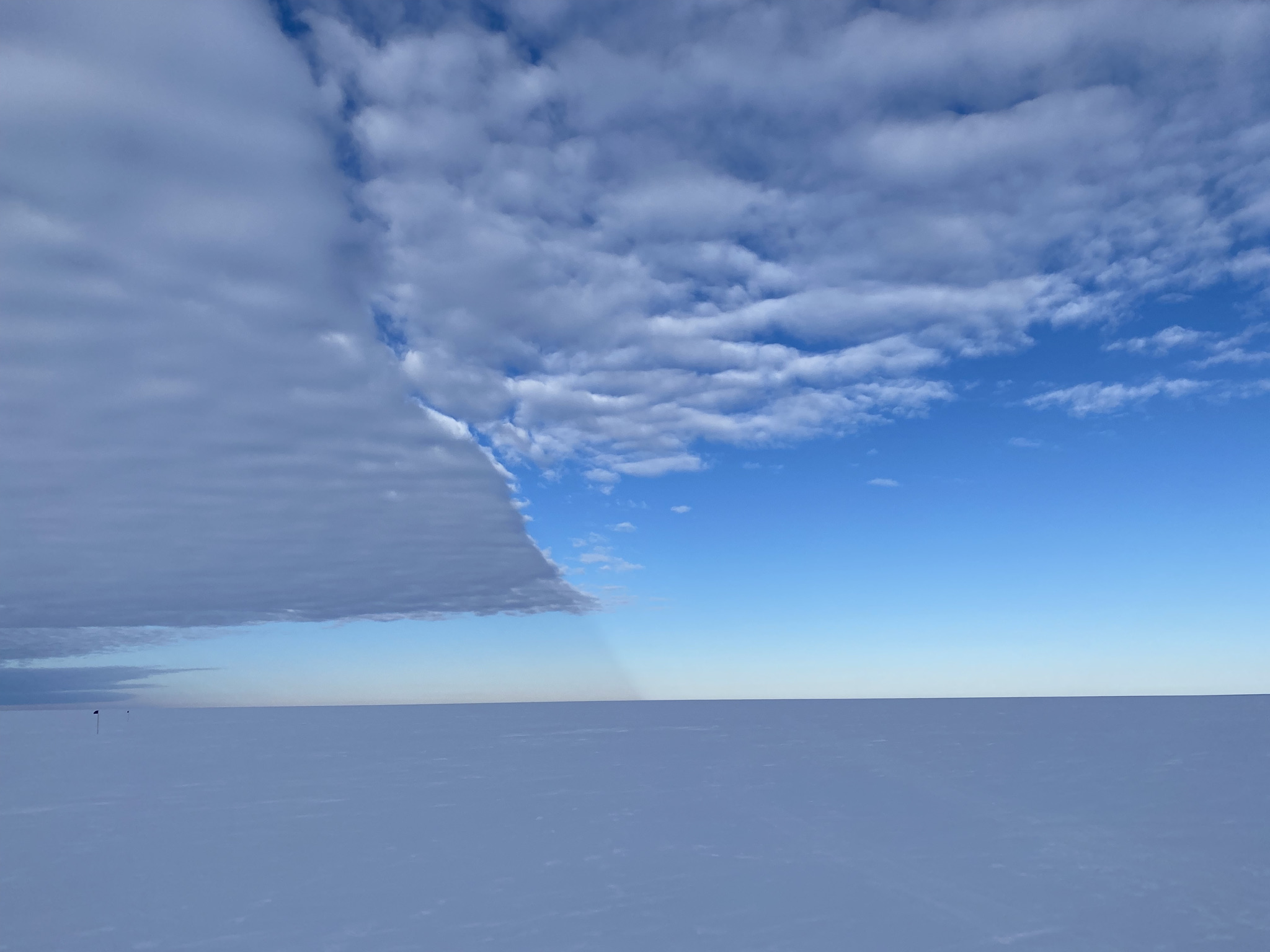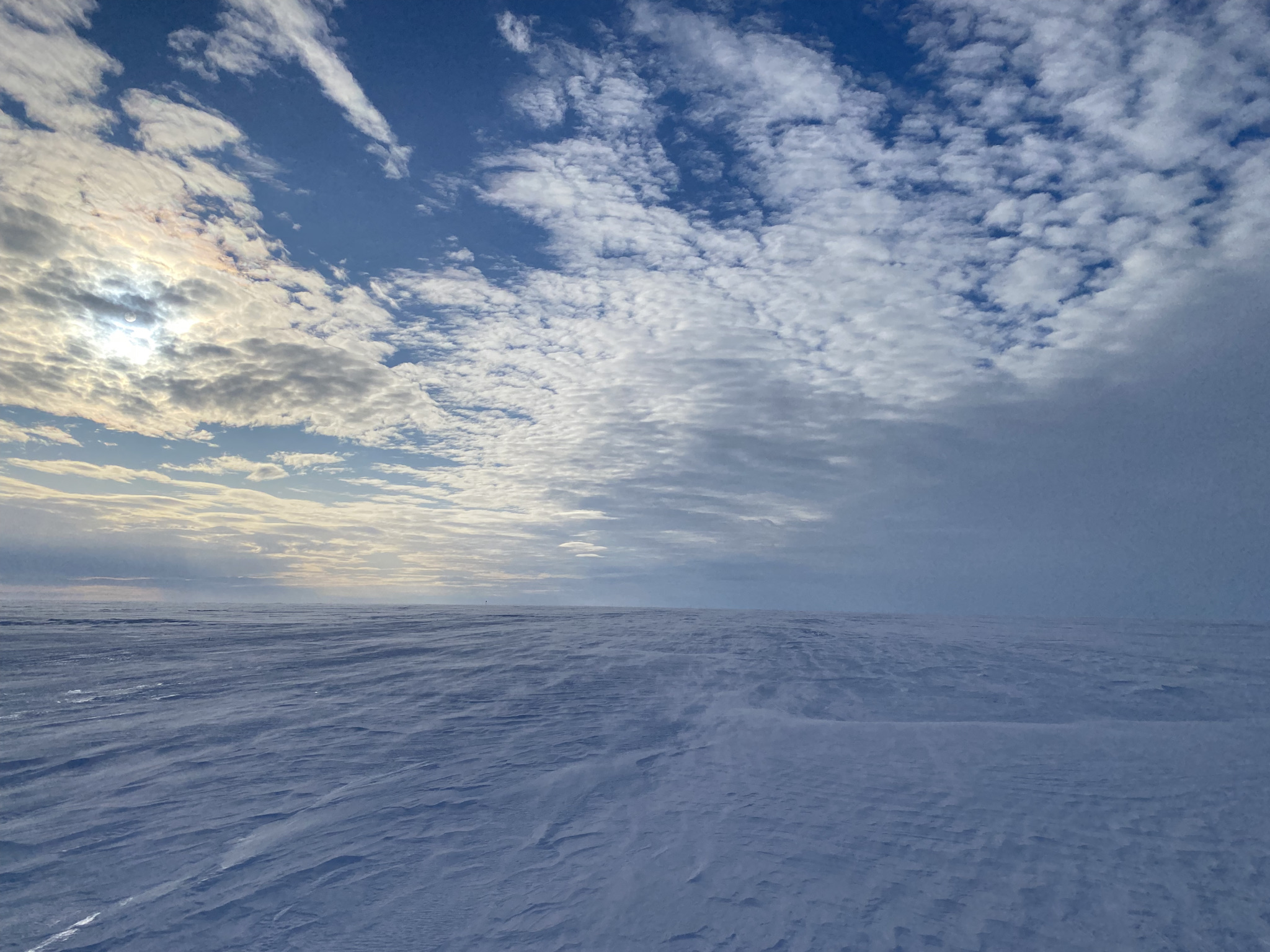Antarctica could see a doubling of extreme weather events – such as atmospheric rivers – by 2100, with implications for future sea level rise.
A new study published last week in Nature Communications reveals that rising levels of atmospheric moisture caused by climate change are expected to dramatically increase the frequency and intensity of "atmospheric rivers" over Antarctica - long, narrow plumes of warm, moist air that can travel thousands of kilometres and deliver intense precipitation.
Using a high-resolution climate model and future greenhouse gas emissions scenarios, the international research team analysed how atmospheric rivers might change over Antarctica in the coming decades.
They predict that by the end of the century, these atmospheric rivers could double in number and increase atmospheric river precipitation by 2.5 times under a high-emission scenario, where there are limited or no efforts to reduce greenhouse gas emissions. This intensification adds a new level of uncertainty to the stability of Antarctic ice sheets and could significantly impact global sea-level rise.

Atmospheric rivers are like aerial conveyor belts of water vapour, forming over oceans and transporting heat and moisture toward the poles. Their impact is complex and contradictory; they can deliver both rainfall and snow, depending on the local conditions. In warmer temperatures, these systems can cause rainfall and surface melting, which can destabilise ice shelves and potentially accelerate ice sheet collapse - including the rapid break up and loss of large sections of floating ice that break off and melt into the ocean. However, when they deliver snowfall, they can replenish ice lost to the ocean. The researchers found that while rainfall will increase, the dominant impact of atmospheric rivers this century will be to bring more snowfall to the ice sheet, temporarily helping mitigate Antarctica's contribution to sea level rise.
"This is the first study to consider how these extreme weather events in Antarctica might change in response to human-induced warming this century," said Michelle Maclennan, a climate scientist at British Antarctic Survey. "Because atmospheric rivers deliver massive precipitation to Antarctica and significantly impact snowfall variability, understanding their future patterns is crucial to projecting Antarctica's contribution to sea level rise."
Year-to-year variations in atmospheric river frequency already create significant fluctuations in Antarctica's contribution to sea level rise. This study highlights that severe weather events in Antarctica are highly sensitive to increased atmospheric moisture - a direct consequence of climate change - making today's extreme events much more commonplace in the future.

Though not exclusive to polar regions, atmospheric rivers play a particularly important role in Antarctic climate dynamics. Their influence extends beyond the immediate precipitation they deliver - they can also trigger melt events through warm air intrusion or rainfall.
The Antarctic Ice Sheet holds enough water to raise global sea levels by nearly 60 metres, meaning even small changes in ice dynamics can have outsized effects. While most sea-level rise projections for this century range between 0.5 and 1 metre, atmospheric rivers represent a critical but previously underappreciated factor that could significantly alter these forecasts.
Rising atmospheric moisture escalates the future impact of atmospheric rivers in the Antarctic climate system by Maclennan, M. L. et al is published in Communications Earth & Environment.






